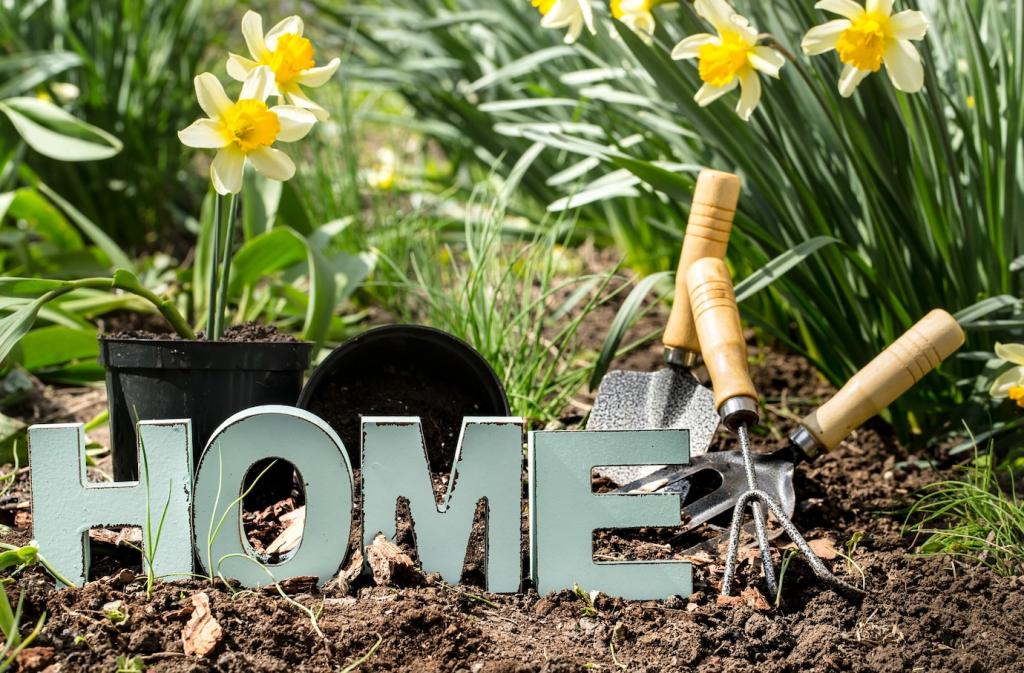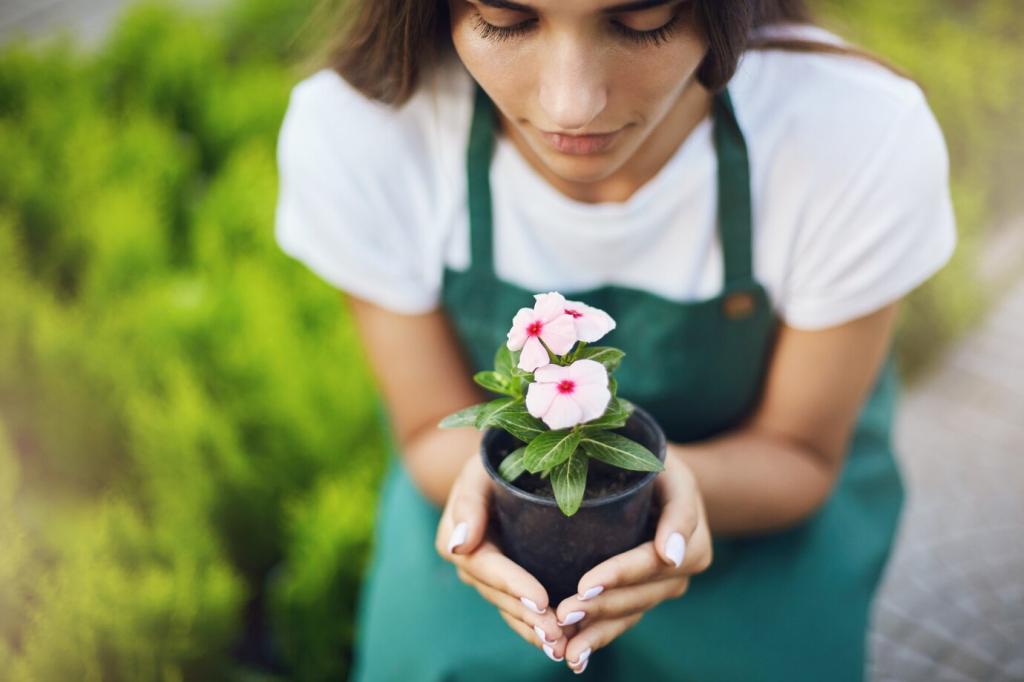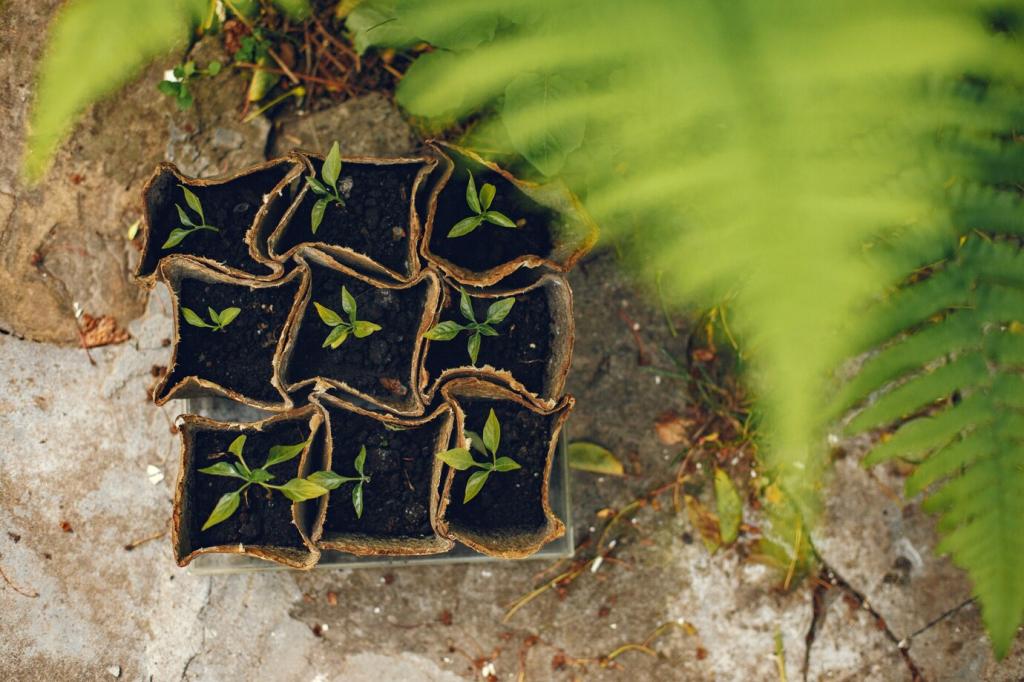
Water-Wise Landscaping Ideas for Lush, Low-Thirst Gardens
Today’s chosen theme: Water-Wise Landscaping Ideas. Explore creative, practical ways to design a beautiful outdoor space that conserves water, supports biodiversity, and thrives through droughts—without sacrificing color, comfort, or personality.
Hydrozoning for effortless watering
Arrange thirsty plants together near your water source, and set drought-tough species farther out. This simple zoning cuts waste, streamlines irrigation schedules, and prevents overwatering. Share your climate zone in the comments, and we’ll suggest a starter hydrozone map to try this weekend.
Right plant, right place
Choose native and climate-adapted plants for each microclimate—hot curb strips, breezy corners, or dappled understories. When plants match conditions, they root deeply, need fewer sips, and shrug off heat waves. Tell us which native species you’re eyeing, and we’ll help pair companions that complement them.
Work with slope, not against it
Use gentle berms and shallow basins to slow runoff and soak water into the soil where plants can access it. By guiding rainfall to roots, you reduce erosion and watering frequency. Post a photo of your slope, and we’ll brainstorm a contour plan to harvest every drop.

Drip beats spray for deep watering
Drip lines and emitters deliver moisture precisely to root zones, minimizing evaporation and overspray. Many gardeners report water savings of 30–50% after switching. If you’ve tried drip, comment with your favorite emitter flow rate and spacing—others will benefit from your setup details.
Smart controllers and soil moisture sensors
Weather-based controllers skip watering after rain and adjust for heat or wind automatically. Pair them with soil moisture sensors to stop cycles the moment soil is adequately wet. Subscribers get our monthly checklist for smarter schedules tailored to seasonal shifts in your region.
Greywater done thoughtfully
Laundry-to-landscape systems can irrigate shrubs and trees with reusable water, reducing potable demand. Use biodegradable detergents, filter lint, and route flows to mulched basins. Ask questions below about your laundry setup, and we’ll share a basic routing diagram to discuss with a professional.
Beautiful Lawn Alternatives
Native meadow strips and seasonal color
Convert a portion of lawn to a low-mow native meadow that shifts with the seasons—golden grasses, purple spikes, and buzzy pollinator traffic. Mow once or twice yearly to maintain structure. Tell us your preferred color palette, and we’ll suggest three native species to start your strip.
Tough groundcovers that sip water
Creeping thyme, kurapia, and clover create resilient green carpets that handle foot traffic and need far less irrigation. Many bloom, feeding bees while softening hardscapes. Share your sun hours and soil type, and we’ll recommend a mix with fragrant patches by paths and seating.
Permeable patios and gravel courtyards
Replace sections of lawn with decomposed granite, gravel, or permeable pavers set among drought-hardy plants. Rain infiltrates, heat dissipates, and maintenance stays light. Show us your yard’s dimensions, and we’ll sketch a simple layout plus a plant list for joints and pockets.


Harvest Rain and Keep It On-Site
A single downspout can fill a 50–55 gallon barrel during a decent storm. Link barrels or upgrade to a slimline cistern to irrigate beds for weeks. Comment with your roof area, and we’ll estimate potential capture and suggest a safe overflow path to nearby plantings.
Harvest Rain and Keep It On-Site
Shallow, planted depressions collect stormwater, filter pollutants, and create mini oases for birds and beneficial insects. Use deep-rooted natives to handle wet-dry cycles. Share a sketch of your drainage, and we’ll help choose plants that won’t mind periodic puddles or summer dryness.


Soil, Mulch, Shade: The Evaporation Trifecta
Incorporate finished compost to improve structure and water-holding capacity, especially in sandy or compacted soils. Healthier soil hosts microbes that help plants access moisture. Tell us your current soil texture, and we’ll recommend a compost rate and gentle aeration methods to try.
Soil, Mulch, Shade: The Evaporation Trifecta
A 2–3 inch layer of shredded bark, arborist chips, or leaf mold reduces evaporation, moderates temperature, and suppresses weeds. Keep mulch off stems to prevent rot. Subscribe for our seasonal mulch guide, including free sources and the best chip sizes for drip line protection.

Stories, Wins, and Community Tips
When Mara swapped sprinklers for drip and added a rain garden, her water use dropped 42%, yet butterflies flocked like never before. She documented every tweak. Ask us for her plant list, and we’ll share the highlights so you can adapt her approach to your yard.
A small front yard replaced turf with thyme, yarrow, and permeable pavers, then tracked bee visits for fun. The HOA loved the tidy edges and seasonal bloom waves. Comment if you face rules, and we’ll suggest compliant designs that still hit water-wise goals beautifully.
Tell us your biggest watering challenge, post a photo, and swap tips with fellow readers. Subscribe for monthly water-wise plant profiles, before-and-after features, and step-by-step weekend projects. Your questions shape future guides—help us build a thriving, low-thirst community together.
